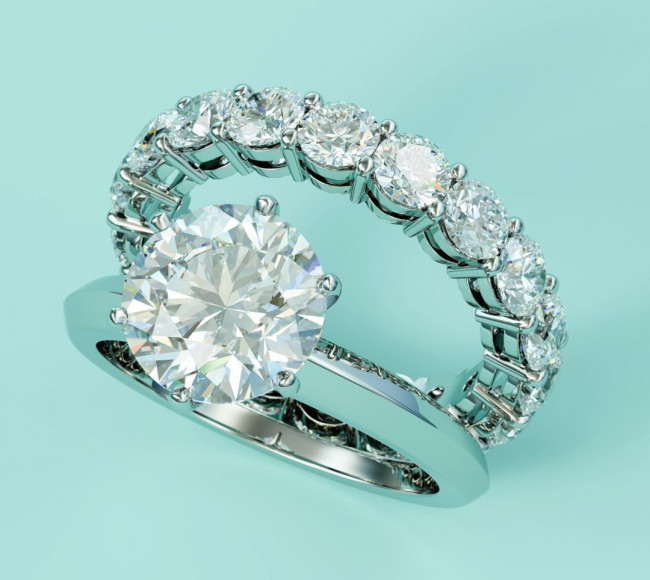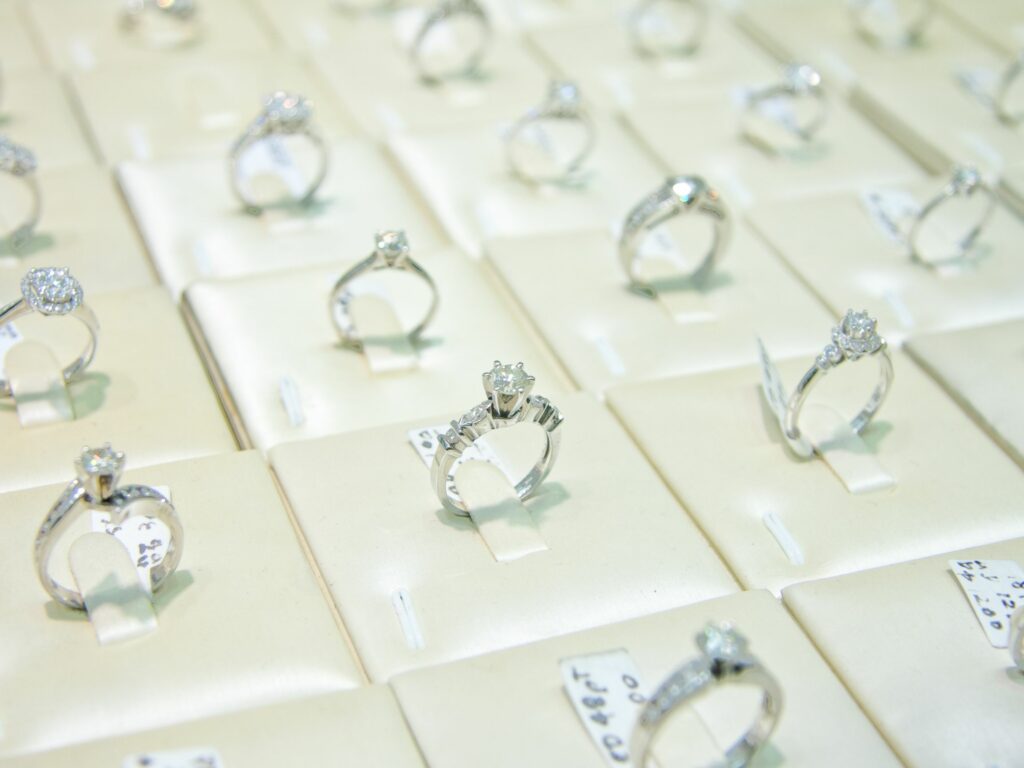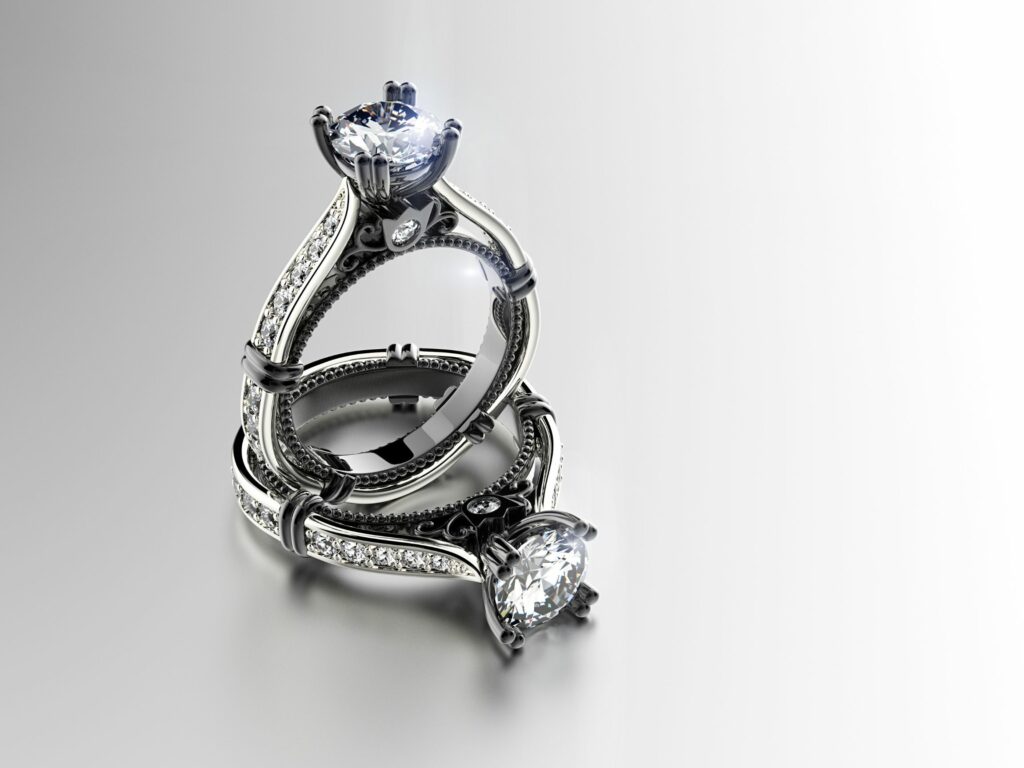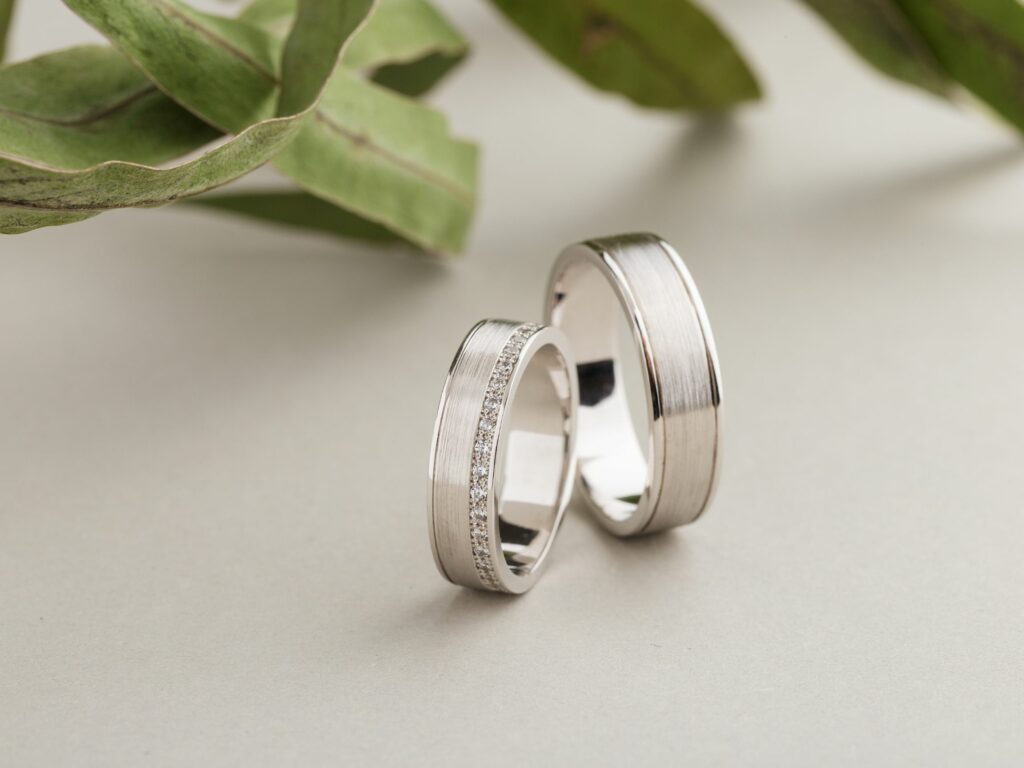
Table of Contents
If you’ve decided that white metal looks good with your style and complexion, then there’s another choice: Platinum vs White Gold. These metals look similar but have very different properties that can make certain designs work better with one another.
This blog post will explore the advantages and disadvantages of platinum and white gold, how they are made, and why Platinum is superior in value and quality to White gold. We will also help you decide if Platinum or white Gold is best for you!

What is White Gold?
White gold is made by alloying (mixing) gold with nickel or palladium, copper, and zinc. In the U.S., this metal is typically 14K (583 parts pure gold and 417 other metals) or 18K (750 parts pure gold and 250 parts other metals).
While most people think of white Gold as a bright, shining metal, it can have a bit of a yellowish tinge. This is because pure white light contains all the rainbow colors – including yellow!
The number of other metals added to the Gold will determine how yellow or “white” the final product looks. A higher percentage of other metals will result in a more silvery appearance, while a lower percentage will produce something that looks more like traditional yellow Gold.
What is Platinum?
Called the “only metal fit for kings” by King Louis XVI of France, platinum comes with royal approval. This white metal is far rarer than gold, and South Africa is the major producer of platinum.
Platinum is a pure metal that is heavier and denser than Gold. It is also the most precious metal of all!
Platinum has a natural bright white color that doesn’t require plating like white Gold. The majority of Platinum mined each year is used for jewelry. But it’s not just its rarity that makes it so special – Platinum’s strength, durability, and resistance to tarnishing make it an excellent choice for fine jewelry.
Platinum vs White Gold: Which Metal is Right For You?
White Gold and Platinum are both precious metals with similar appearances but different properties.
If you have decided that white metal is what catches your eye, then it’s important to know the differences between them before making a purchase or getting a piece of custom jewelry made for yourself!

Durability
Platinum is denser and stronger than gold, so it is an excellent choice for engagement and wedding rings. Because platinum is strong and less brittle than gold alloy, platinum prongs are less likely to break so it is ideal for setting diamonds.
Even though White Gold isn’t as durable as Platinum, it is a strong metal and will hold fine engraving details. White Gold is also a strong metal as it’s alloyed with nickel. So, if your design has detailed hand engraving, White Gold will keep these features in place beautifully.
Color
Platinum has a natural white color that does not require plating like white Gold.
White Gold is an alloy of yellow Gold and other metals like silver, palladium, and nickel. The addition of these other metals gives the Gold a white appearance. Although white Gold is usually considered a metal with a brilliant shine, it can have a slightly yellowish color. This can be fixed with Rhodium plating, which is essentially a surface treatment.
The surface of White Gold is coated with a very thin layer of metal called Rhodium, which is electroplated onto the surface to make it a more brilliant white color. This plating dulls over time and must be renewed regularly. If you treat your jewelry properly, the plating can last anywhere from 1 to 3 years.
If you want your jewelry to have a truly white color, then Platinum is the better choice. But if you don’t mind a slight yellow tint or want to save some money, then white Gold might be right for you!
Price
Platinum is more expensive than white Gold because it is better quality and rarer. However, keep in mind that Platinum is lower maintenance, whereas white Gold will need replating over time, so that can add up over the years.
Sensitive Skin
Platinum might be the better choice for you if you have sensitive skin. Platinum is a hypoallergenic metal, which is less likely to cause an allergic reaction.
While white gold is a common jewelry metal, it is not the best choice for people with a nickel allergy. Nickel is often found in gold alloys, so people with nickel allergy can experience a reaction to their gold jewelry. Platinum, on the other hand, does not contain nickel and is, therefore, a better choice for people with this allergy. Platinum is also more durable than gold, which will last longer without tarnishing or scratching.
Platinum is the only metal you can purchase for truly hypoallergenic jewelry, as it contains 90-95% purity. If your skin is sensitive, any metals mixed in with white Gold may irritate it. Therefore, if you have any suspected allergies, it would be best to stick to platinum jewelry.
Weight
Platinum is heavier than white Gold, so it can feel more substantial on your finger. This is ideal if your lifestyle involves a manual job, as Platinum is extremely durable. However, wearing it while doing sports or doing heavy manual labor is not advisable.
Platinum is almost twice the density of gold so some people find Platinum too heavy and prefer the lighter weight of white Gold, especially on larger jewelry pieces.

Platinum Rings vs White Gold Rings
While the metal you choose for your engagement ring is largely based on personal preference and style, it is helpful to consider the differences in composition and price.
White Gold and Platinum, for example, look very similar to the naked eye, while platinum costs significantly more. Suppose you don’t have skin sensitivity problems. In that case, you may spend more of your budget on the diamond than on a platinum setting and get a white gold engagement ring instead.
Platinum jewelry is ideal for heirloom pieces and high-end designs. This durable metal will last generations, so if you can spend a little more money on your engagement ring, don’t hesitate to choose platinum as the metal for it! Both platinum and white gold can be resized or restored if passed down to future generations – making both a great choice when you want to be able to turn your jewelry into a generational family heirloom.
Platinum vs White Gold – Is Platinum Superior?
Platinum is a higher quality metal than white Gold and is more expensive. Platinum is also hypoallergenic, making it ideal for people with sensitive skin.
Platinum is a better choice if you want a piece of high-end jewelry that will last a lifetime. But if you want something less expensive, have no skin sensitivity problems, and don’t mind replating over time, then white Gold might be right for you!
In Conclusion
We have designed and created so many engagement rings in different metals, including white Gold and Platinum. White Gold is a less expensive alternative to platinum which still has a similar appearance.
However, many people prefer Platinum because it’s stronger than other metals, low maintenance, is the best choice for high-end jewelry, and can be used for all styles of rings, including contemporary and vintage-style rings.
If you want something classic and don’t mind rhodium plating over the years, go for white Gold. If you’re willing to spend a little more for a stronger metal that will give your ring an antique and sturdy feel, Platinum is the way to go!
